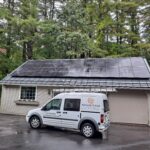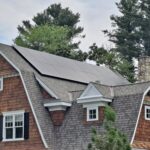If you’ve grown up in New England states like Massachusetts or Connecticut, then I’m sure you know about its hot summers and cold winters. It is not dry and arid like the Pacific Southwest, rather New England is prone to wet and cloudy weather for a good portion of the year. It also gets a significant amount of snowfall annually.
With all of those conditions I mention above, many people question why New England would be the appropriate venue for generating solar photovoltaic energy. Here are 5 reasons why New England does have the right climate for solar power:
1. Economic viability is a function of the available sun power and local incentives.
Some states with a tremendous amount of sunny days do not incentivize their citizens financially. Massachusetts and Connecticut are among the 5 or 6 most “solar-friendly” states in terms of economic incentives in the form of rebates, tax credits and exemptions, Solar Renewable Energy Credits (SRECs) and net metering policies.
2. Germany has the largest solar capacity installed and New England has more sun hours than Germany in an average day.
Our available sun power here in New England is about 80% of the sunniest parts of the Southwestern US and is much greater than anywhere in Germany. Germany is actually about as sunny as Alaska! Unlike wind, most areas in the United States would be ideal for solar as long as the system has the right orientation and is unshaded.
3. Colder temperatures are actually better for solar.
Although it may intuitively seem that the Arizona desert is ideal for PV, the intense heat decreases the efficiency of the modules. Cooler temperatures mean higher efficiency.
4. Photovoltaic systems do produce electricity on cloudy days.
The electricity production will not be as high as on a sunny day, but your system will still generate electricity because there will still be some irradiance. Under a light overcast day, panels might produce about half as much as under full sun.
5. Snow typically melts quickly off of solar panels.
When it snows, the snow may cover the solar panels and affect the production of your system. However, in most cases enough sunlight will still be able to penetrate through to the modules, warming them and melting the layer of snow that is on them. Snow typically clears from your solar panels much sooner than other parts of the roof.







